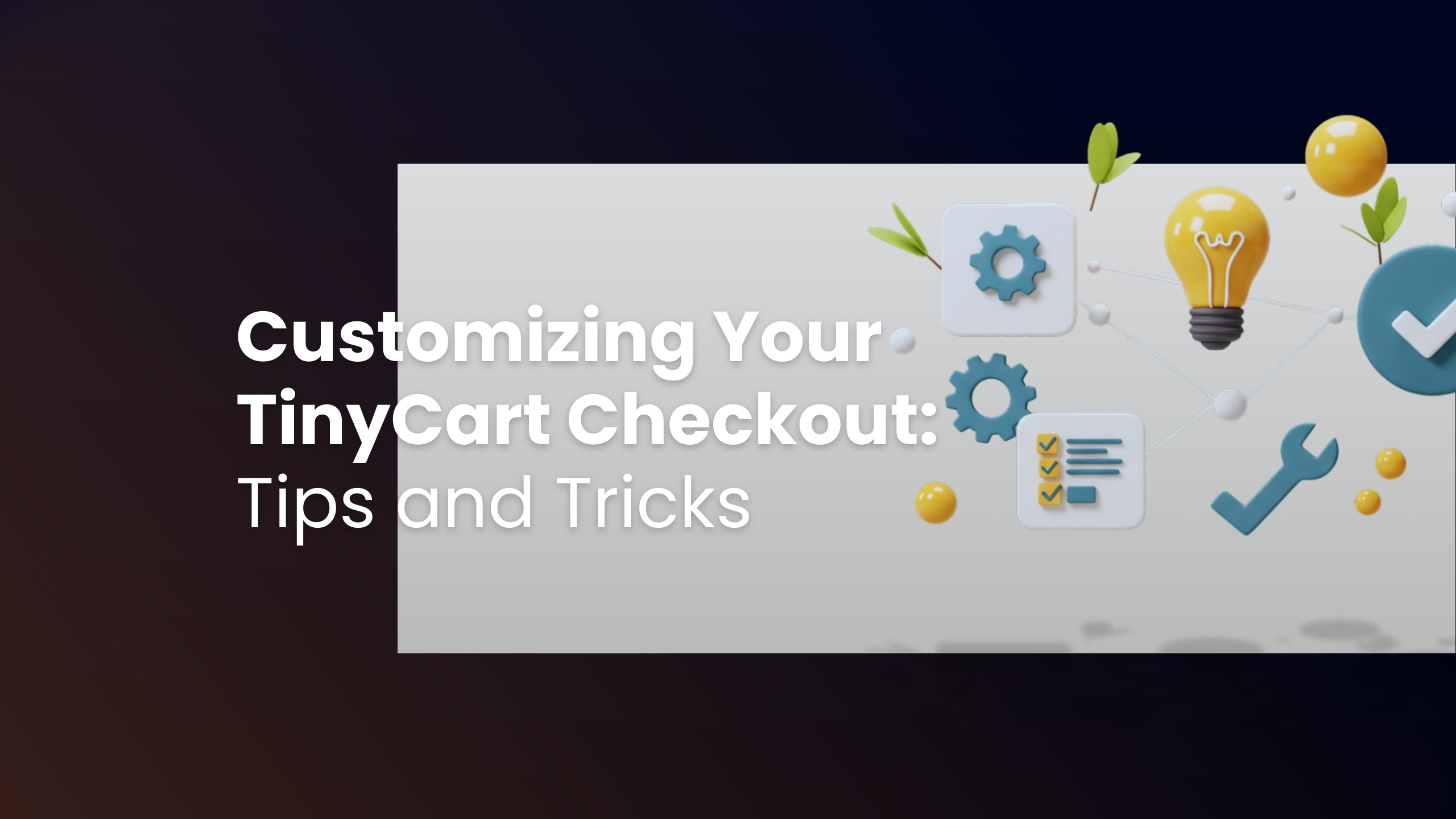Customizing Your TinyCart Checkout: Tips and Tricks
A smooth and efficient checkout process is vital for converting visitors into paying customers. Customizing your TinyCart checkout can not only enhance the user experience but also reduce cart abandonment and boost conversion rates. In this guide, we outline practical tips and tricks for tailoring your checkout process—from design adjustments to technical configurations—ensuring that your online store is optimized for success.
- Understanding Your TinyCart Checkout
Before you begin customization, it’s important to understand the default checkout flow. TinyCart provides a robust, out-of-the-box checkout that covers essential elements such as billing information, shipping details, and payment processing. However, you can enhance this experience by:
a. Streamlining the user interface
b. Simplifying the number of steps
c. Tailoring the design to match your brand
Actionable Tip:
Review your current checkout process from a customer’s perspective to identify areas for improvement.
- Customizing the Design
Enhancing the visual appeal of your checkout can improve usability and trust. Consider these design modifications:
Theme Customization:
Use the TinyCart theme editor to adjust colors, fonts, and layouts that align with your brand identity.
Simplify Navigation:
Remove unnecessary fields and steps to create a clean, intuitive user interface.
Responsive Design:
Ensure the checkout is fully responsive, providing a seamless experience on both desktops and mobile devices.
Actionable Tip:
Experiment with different design settings in the TinyCart theme editor and gather feedback from test users to refine the layout.
- Technical Configurations
Optimizing technical aspects of the checkout process ensures smooth functionality and security:
Payment Gateway Settings:
Customize and test payment gateway configurations to ensure seamless transactions. Double-check API credentials and secure integrations.
Form Field Optimization:
Customize form fields to reduce friction—use autofill, dropdowns, and pre-populated data where possible.
Checkout Flow Enhancements:
Implement conditional logic to display or hide fields based on user input, streamlining the overall process.
Actionable Tip:
Use TinyCart’s documentation to configure advanced checkout options and test the integration thoroughly in a sandbox environment before going live.
- Troubleshooting Common Issues
Even after customization, issues may arise. Here are common problems and their solutions:
1. Incomplete Data Submission:
Ensure all required fields are clearly marked and validated.
2. Slow Checkout Loading Times:
Optimize images and scripts, and leverage caching to reduce load times.
3. Payment Processing Errors:
Verify API keys, confirm server compatibility, and check for any conflicts with other plugins.
4. Mobile Responsiveness Issues:
Test across multiple devices and adjust responsive settings as needed.
Actionable Tip:
Maintain a troubleshooting checklist and log any issues along with their resolutions to streamline future updates.
- Actionable Next Steps
Transform your checkout customization into measurable improvements:
1. Assess the Current Flow:
Analyze user behavior and identify bottlenecks in your existing checkout process.
2. Set Improvement Goals:
Define specific, measurable objectives (e.g., reduce checkout time by 20% or increase conversion rate by 15%).
3. Customize and Test:
Apply design and technical modifications in a testing environment, gather feedback, and iterate.
4. Monitor Performance:
Use analytics to track key metrics such as abandonment rates and conversion rates post-customization.
5. Refine Continuously:
Regularly update the checkout design and functionality based on performance data and evolving customer needs.
Actionable Tip:
Develop a short-term action plan with clear milestones to guide your customization efforts, and review progress monthly.
- Continuous Learning and Support
Stay up-to-date and enhance your checkout customization skills:
Webinars & Workshops:
Attend sessions on e-commerce UX design and payment integration best practices.
Online Courses:
Platforms like LinkedIn Learning offer courses on user experience design and e-commerce optimization.
Community Forums:
Engage with TinyCart support communities and e-commerce groups for shared experiences and solutions.
Call-to-Action:
Join our next inventory of expert-led webinars to gain deeper insights into checkout optimization.
Key Takeaways
- User Experience is Critical: A streamlined, intuitive checkout improves conversions.
- Customize to Your Brand: Tailor the checkout design to reflect your brand’s identity.
- Optimize Technical Configurations: Ensure payment gateways and form fields are fully optimized for performance and security.
- Regular Testing and Troubleshooting: Continuously monitor and resolve issues to maintain a smooth checkout process.
- Actionable Roadmap: Develop and follow a clear plan to implement improvements and track performance over time.
- Continuous Learning: Engage with webinars, courses, and community forums for ongoing support and updates.
Conclusion
Customizing your TinyCart checkout is a powerful way to enhance the customer shopping experience and boost conversion rates. By focusing on design improvements, technical optimizations, and rigorous testing, you can create a checkout process that is not only efficient and secure but also aligned with your brand. Use the actionable steps provided in this guide to implement changes, monitor performance, and continually refine your process for lasting success.
FAQs
- Why is it important to customize the checkout process?
A customized checkout can reduce friction, improve user experience, and ultimately increase conversion rates. - What are common technical issues during checkout integration?
Issues may include incomplete data submission, slow load times, payment processing errors, and mobile responsiveness problems. - How can I optimize form fields for better user experience?
Use autofill, dropdown menus, and conditional logic to streamline the process and reduce manual input. - What tools can help monitor checkout performance?
Use analytics tools and digital dashboards to track conversion rates, abandonment rates, and other key metrics. - How often should I update my checkout design?
Regular reviews—monthly or after major updates—are recommended to ensure the checkout remains efficient and aligned with customer needs.

